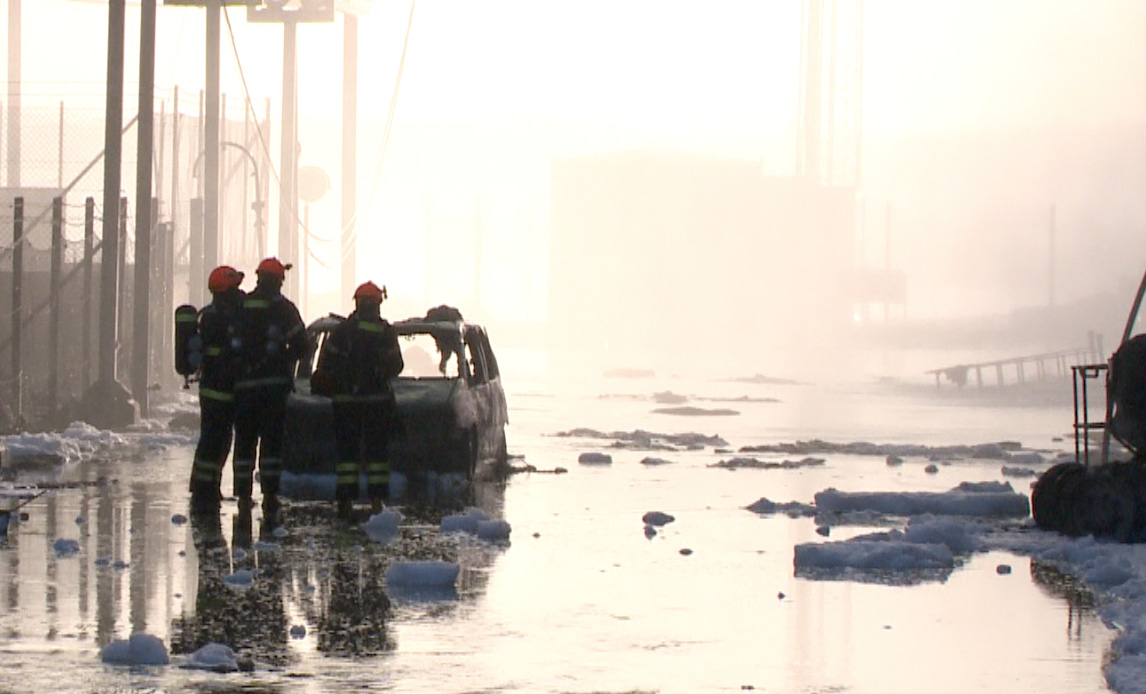News
International emergency management cooperation
International emergency preparedness cooperation primarily includes civil protection, but also health preparedness, marine environmental preparedness, etc.

HazMat chemical disaster. Photo: The Danish Emergency Management Agency.
The last decade has been characterized by an increasing number of humanitarian crises, violent conflicts, terrorism, and natural disasters. In Europe, we have experienced repeated cased of flooding and forest fires, and also other kinds of natural disasters and technological failure. Furthermore, we are at risk for more dire consequences of natural disasters due to the increased vulnerability of technology and society in general. This is why we need an efficient international cooperation to combat these cross-frontier risks and threats.
As a result of the many disastrous events, both in and outside of Europe, international emergency management cooperation has experienced a considerable development.
Purpose of international cooperation
The primary purpose of international emergency management cooperation is protection of civilians. Other fields of emergency cooperation cover health, marine environment, transportation, it and telecommunication, critical infrastructural protection, the CBRN (Chemical, Biological, Radiological, Nuclear) area, crisis management structures, and nuclear issues.
International disaster cooperation is founded on overall principles and directives, adopted by the UN. Especially EU has developed the area of civilian protection in the last decade. This area is now included in the Lisbon Treaty. In EU, the adapted EU legislation regulates cooperation, respecting individual national responsibilities. There is a similar cooperation in the UN regarding civilian emergency management.
Nordic cooperation
In a Nordic setting, we have seen a renewed and expanded cooperation in the emergency management area. For instance, the five Nordic ministers responsible for emergency management meet on a regular basis. Denmark also has bilateral agreements with neighbouring countries regarding mutual assistance in the event of accidents and disasters.
Nordic emergency management cooperation
The Nordic ministers responsible for civil protection and emergency management hold their annual meeting to reinforce cooperation within a series of fields, essential for the emergency management of Finland, Iceland, Norway, Sweden, and Denmark.
The reinforced Nordic cooperation originally stems from the Haga Declaration of April 2009, adopted at the Haga Castle outside Stockholm. At the Haga ministers’ meeting in June 2013, the Haga II declaration was adopted. This declaration signifies a further strengthening of the Nordic cooperation in the area of emergency management, where the effort is directed towards a vision of ‘a robust North without borders.
One goal is to strengthen the Nordic profile internationally in relation to the cooperation within the EU, among others. The Nordic countries are working on a further development of the possibility for mutual assistance, in accordance with the Nordic Declaration of Solidarity of 2011, among other things. Furthermore, joint Nordic modules shall be applicable for aiding disaster-stricken countries outside the North.
Areas of cooperation
The Haga cooperation comprises a series of identified areas of cooperation, such as
- Rescue service
- Exercises and education
- CBRN preparedness
- Crisis portals
- Recruitment of volunteers
- Research and development
- Tactical fire prevention (fire prevention by influencing attitude and behaviour)
- Strategic air transportation to disasters
- Strategic air transport
- Host nation support
- Development of joint Nordic modules
As point of departure, the individual projects are conducted and lead by the emergency management authorities of the Nordic countries.
DEMA
Danish Emergency Management Agency (DEMA) is a governmental agency under the Ministry of Defence. We work to prepare society for, prevent and respond to major accidents and disasters.